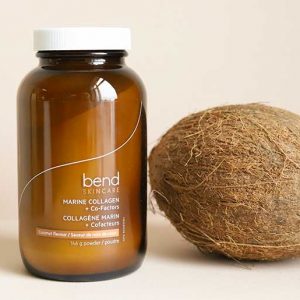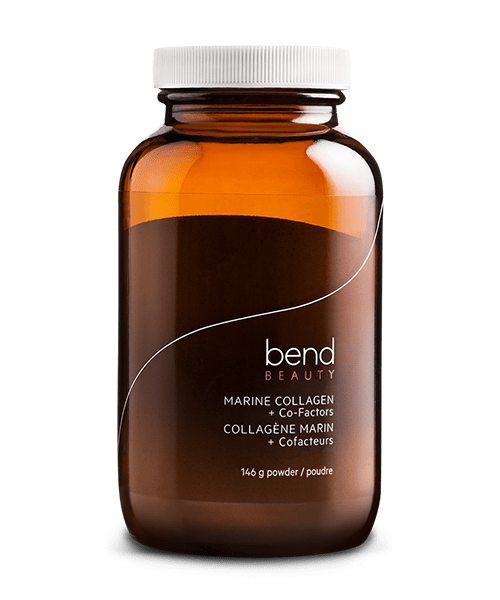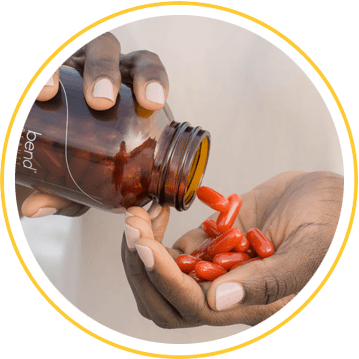
Key takeaways:
- Marine collagen has less impact on the environment
- Purity of skin from wild-caught fish vs. farmed animals
- Inclusive of pescatarian and kosher diets
- Why wait? Buy Now
There are tons of collagen options on the market as the category continues to explode. It can get overwhelming trying to figure out which one to use – and among the many questions we ask is what is the difference between marine (fish) collagen and bovine (cow) collagen? The most obvious difference is that marine collagen is made from fish skin and bones while bovine collagen is made from cow hides. So, what does that really mean, and why did we choose to use hydrolyzed marine collagen in our formulation?
Marine collagen has less impact on the environment than bovine collagen
Roughly 11.7 million tons of unused fish parts are discarded annually during processing, so using them to make hydrolyzed collagen is environmentally friendly (1). On top of that, fish protein in general releases far less greenhouse gas emissions than most meat products. For example, Icelandic cod loins bought directly from the fisherman contribute just over 0.5 Kg CO2 eq/Kg of fish and added effort to get them to some markets increases their carbon footprint to about 3.75 Kg CO2 eq/Kg of fish. In contrast, beef production alone contributes 16 Kg CO2 eq/Kg of beef, not counting added emissions needed to get it to market (2).
Currently, although cow hides are abundant byproducts and cheap to produce, their source plays an important negative role in climate change. Livestock production accounts for 14.5 percent of all human-induced green-house gas emissions with beef and bovine milk production contributing 41 and 19 percent of those emissions (3); that includes grass-fed as well as grain-fed animals.
Wild and responsibly sourced
Wild-caught fish are not treated with drugs, such as antibiotics, or hormones that may be used in farming practices, depending on local regulations. The skins used to manufacture our hydrolyzed collagen are by-products from the food industry from fisheries under strict government control regarding catch methods and quotas (4).
Options for personal preferences
While minimizing our impact on the environment is close to our hearts, we also realize bovine collagen may not be everyone’s cup of tea. By choosing fish derived hydrolyzed collagen we offer a pescatarian option for those who may not consume terrestrial animals. Our hydrolyzed marine collagen is also kosher.
Bend chose wild-caught, sustainably sourced hydrolyzed marine collagen over bovine for the reasons outlined above. The Nova Scotia manufactured, hydrolyzed marine collagen ingredient, that is the main component of our Marine Collagen + Co-Factors, is primarily derived from Icelandic fisheries cod skins, with smaller amounts of haddock and pollock skins.

Marine Collagen + Co-Factors – Powder
$52.00
References:
1. Byproduct. IFFO. The Marine Ingredients Organization. Accessed online on December 11, 2018 at http://www.iffo.net/byproduct
2. Icelandic Cod, High Quality food from sustainable resources. Accessed online on December 12, 2018 at http://www.matis.is/media/baeklingar/LCA_of_Icelandic_cod_loins.pdf
3. Tackling climate change through livestock. Agriculture and Consumer Protection Department. Food and Agriculture Organization of the United States. Accessed online on December 11, 2018 at http://www.fao.org/ag/againfo/resources/en/publications/tackling_climate_change/index.htm
4. Sripriya R, Kumar R. A Novel Enzymatic Method for Preparation and Characterization of Collagen Film from Swim Bladder of Fish Rohu (Labeo rohita). Food and Nutrition Sciences 2015;6(15): Article ID:61421,11 pages 10.4236/fns.2015.615151 Accessed online on December 11, 2018 at http://file.scirp.org/Html/13-2701752_61421.html
Editor’s note: This post was originally published in January 2019 and has been updated in October 2020.

